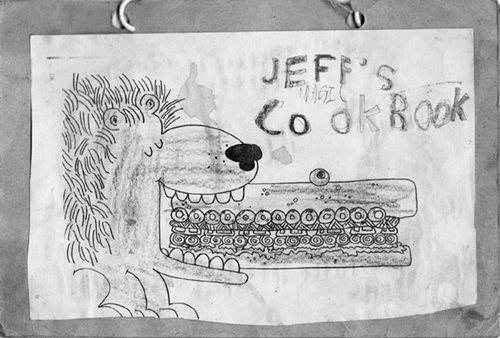Preface
Hackers, makers, programmers, engineers, nerds, techies—what we’ll call “geeks” for the rest of the book (deal with it)—we’re a creative lot who don’t like to be told what to do. We’d rather be handed a box full of toys or random electronic components, or yarn, or whatever, and let loose to play.
But something happens to some geeks when handed a box full of spatulas, whisks, and sugar. Lockup. Fear. Foreign feelings associated with public speaking, or worse, coulrophobia. If you’re this type, this book is for you.
Then there’s another type of geek: the über-nerd, who’s unafraid to try anything...maybe a bit too unafraid, but hasn’t had that Darwin Award moment (yet). The type of geek who is either “all on or all off,” who addresses every aspect of the perfect cup of coffee, down to measuring the pressure with which the grinds are tamped into the espresso machine’s portafilter. This kind of geek is always on the search for the next bit of knowledge. If you’re this type, this book will inspire you.
And then there’s everyone else: the everyday geek, normal, inquisitive, and looking to have more fun in the kitchen. Maybe you’re comfortable in the kitchen and would like new ideas, or perhaps you’re not quite sure where to start but are ready to give it a go. This book will show you easy ways of trying new things.
Regardless of which type of geek you are, as long as you have “the courage of your convictions” to pick up the spatula and try, you’ll do fine. The goal of this book is to point out new ways of thinking about the tools in that box full of kitchen gear.
Of course, I have plenty of tips and secrets to share (“spill the beans,” as they say), so I hope you’ll buy this book and take it home with you. Scribble notes in the margins about bits that you like (or just star—upvote?—those paragraphs). Write in questions on things that leave you perplexed or wondering. Learning to cook is about curiosity, learning to ask questions, and figuring out how to answer those questions.
When you’re done with the book, pass it along to a friend (although my publisher would rather you buy that friend a new copy!). If you’ve received this book from a friend, I hope it’s because they think you’ll enjoy it and not because your cooking is lousy. Cooking is about community, and sharing knowledge and food is one of the best ways to build community.
If you’re the (N+1)th person to have received this book—if it’s dog-eared, worn, and beat up, and by the time you’re done with it there aren’t any more spots left to write comments in the margins—then I have a favor to ask of you: send me the marked-up book when you’re done. In return, I’ll send you back something random (possibly only pseudorandom). See the book’s companion website for information on how to do this:
How to Use This Book
This book is designed for use in a couple of different ways.
If you want to “just cook,” flip to the recipe index, pick a recipe, and skip straight to that page. The surrounding text will explain some aspects of the science behind the recipe. While the recipes in this book are chosen to complement and provide examples of the science, they’re also recipes that are fantastic in and of themselves. Most of the recipes are for single components—say, beef short ribs—without accompanying sides. This allows the various components of a meal to be covered in appropriate science sections, and also keeps each recipe short and easy.
If you’re more interested in curling up with a cup of $favoriteBeverage, pick a chapter based on
your interests and tuck in.
The first portion of this book covers topics you should think about before turning on the oven: how to approach the kitchen and how to think about taste and smell. The middle portion covers key variables in cooking (time and temperature) and baking (air), as well as some secondary variables. The final two chapters address some of the more creative things you can do in the kitchen, either with “software” (chemicals) or “hardware” (blowtorches!). Recipes and experiments are sprinkled throughout the book, along with interviews of scientists, researchers, chefs, and food bloggers. Here’s a taste of what you’ll find in this book:
- Chapter 1
What does success in the kitchen mean? How do you pick a recipe, and then how do you interpret it correctly? This chapter considers these questions and also touches briefly on nutrition (really, the all-pizza diet has got to go).
- Chapter 2
This chapter covers the basic must-haves, but it is ultimately up to you to experiment, adapt, and modify these suggestions to fit your needs and tastes. Use common sense. In addition to the essentials, this chapter also touches on storage tips, kitchen organization tricks, and things to keep in mind if you’re new to cooking.
- Chapter 3
This chapter explains the physiology of taste and smell and shows how to improve your understanding of flavor combinations, giving ideas on how to stir up new ideas.
- Chapter 4
This chapter explains the chemical reactions that occur when heating foods, so that you’ll know what to look for when cooking. We start with a discussion of heat, looking at the differences between various ways of cooking, how the temperature choice impacts the outcome, and what chemical reactions are taking place. The rest of the chapter then examines a range of temperatures, starting with the coldest and ending with the hottest, discussing the importance of each temperature point and giving example recipes.
- Chapter 5
This chapter takes a brief look at gluten and then examines baking’s key variable, air. It covers the three primary methods of generating air—mechanical, chemical, and biological—giving common techniques for creating air and notes on how to work with the associated ingredients.
- Chapter 6
This chapter takes a look at cooking techniques that use food additives, both traditional and modern. Some recent culinary techniques, falling under the genre termed molecular gastronomy or modernist cuisine, rely on chemicals. Some of these chemical-based techniques are covered in the second portion of this chapter. Even if you’re not the type who wants to use food additives, understanding the chemistry and purposes of various food additives makes recovering from kitchen errors quicker and decoding ingredient lists at the grocery store easier.
- Chapter 7
Here we cover some of the commercial and industrial tools used in preparing foods, such as sous vide, and throw in a few, uh, “crazy” (and fun!) things that one can do in the kitchen as well. Modern commercial kitchens, most likely including the high-end ones in your area, use a variety of tools that consumers rarely encounter but that can help create some absolutely stellar meals.
As is so often the case with science, what we don’t know about cooking seems to be increasing at a faster rate than what we do know. And then there’s the difference between theory and practice (in theory, they should be the same; in practice, hahaha). One research paper will find that myosin (a protein in muscle) denatures in fish at 104°F / 40°C, while another reports 107°F / 41.7°C, and yet another at an entirely different temperature. Maybe it’s the type of fish that matters (lean versus fatty does make a difference), or maybe it’s just that fish. Biology does not confine itself to simple models, so when you’re trying to combine the various pieces of information into a uniform picture, some discrepancy is unavoidable.
On the Web
So much of cooking is about sharing, community, and discussion. Beyond this book, here are a few places to share your creations, comments, and questions.
For videos, more recipes, and additional interviews, see this book’s companion website, at http://www.cookingforgeeks.com/.
If you use Facebook, see http://facebook.com/cookingforgeeks.
If you tweet, follow @cookingforgeeks; use the hashtag “#c4g” for general discussion.
Many of the photos included in this book are available under a Creative Commons license on Flickr; see the photosteam at http://www.flickr.com/cookingforgeeks. If you post photos of dishes you’ve made from recipes in this book, tag them with “cookingforgeeks” so that they show up on the Community section on http://www.cookingforgeeks.com.
Acknowledgments
I extend my thanks to my good friends Mark Lewis and Aaron Double. Mark suffered through the first versions of both the food and the chapters and provided invaluable feedback on both. Aaron spent too much time turning my chicken-scratch sketches into the charts and diagrams that appear throughout the book. (Aaron is an amazing industrial designer—see http://www.docodesign.com—and he can use Illustrator faster than I can use paper and pencil.) Barbara Vail and Matt Kiggins helped dig up research papers on everything from the aforementioned myosin proteins to average weight gains during the holidays (about 0.5 lbs—not much, but it turns out we don’t tend to lose it the following spring), while Quinn Norton fed me congee and helped in more ways than one with the interviews and text.
I’m extremely grateful to the many chefs, bloggers, researchers, and scientists who took time out of their often insanely busy schedules to speak with me. Their insights helped shape the way I think, and I hope the resulting interviews in the book are not just informative, but fun.
Thanks to all those who joined me for the weekly Book Club and Test Club dinners while working on the book, and, finally, thanks to Marlowe, Laurel, Brian, Edie, and the team at O’Reilly and the tech reviewers whose feedback has made this a better book. And of course, thanks to my parents for being so supportive and encouraging. I’ll try to not splatter duck fat on the ceiling next time I’m home.
I hope you have as much fun trying out the various ideas in this book as I did putting them together!
How to Contact Us
Please address comments and questions concerning this book to the publisher:
O’Reilly Media, Inc.
1005 Gravenstein Highway North
Sebastopol, CA 95472
800-998-9938 (in the United States or Canada)
707-829-0515 (international or local)
707 829-0104 (fax)
We have a web page for this book, where we list errata, examples, and any additional information. You can access this page at:
To comment or ask technical questions about this book, send email to:
For more information about our books, conferences, Resource Centers, and the O’Reilly Network, see our website at:
Safari® Books Online
Safari Books Online is an on-demand digital library that lets you easily search over 7,500 technology and creative reference books and videos to find the answers you need quickly.
With a subscription, you can read any page and watch any video from our library online. Read books on your cell phone and mobile devices. Access new titles before they are available for print, and get exclusive access to manuscripts in development and post feedback for the authors. Copy and paste code samples, organize your favorites, download chapters, bookmark key sections, create notes, print out pages, and benefit from tons of other time-saving features.
O’Reilly Media has uploaded this book to the Safari Books Online service. To have full digital access to this book and others on similar topics from O’Reilly and other publishers, sign up for free at http://safaribooksonline.com.
Get Cooking for Geeks now with the O’Reilly learning platform.
O’Reilly members experience books, live events, courses curated by job role, and more from O’Reilly and nearly 200 top publishers.



